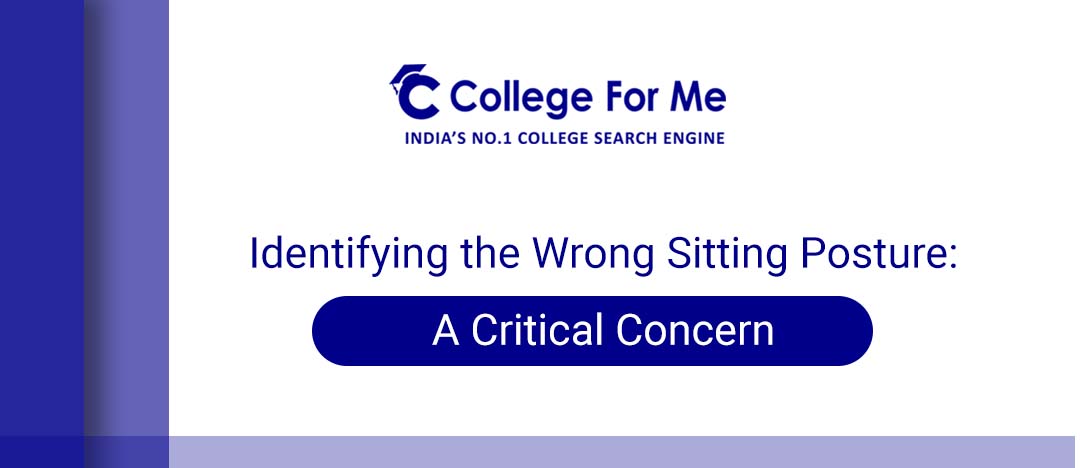Career Scopes Of A B.Tech. Student
There is a high demand for B.Tech. degree holders in the private sector, yet, there is also the opti...

As youngsters, we often underestimate the impact of our sitting posture on our overall health and well-being. The way we sit, especially for extended periods, can have significant repercussions on our musculoskeletal system, causing discomfort, pain, and potential long-term issues.
In this blog, we will explore how to identify signs of a wrong sitting posture among youngsters. Understanding these indicators will enable us to take the necessary steps toward addressing this crucial concern.
Rounded Shoulders:
One common sign of a poor sitting posture is rounded shoulders. When we slouch or hunch forward while sitting, our shoulders tend to roll forward, creating a rounded appearance. This posture puts strain on the muscles and joints in the neck, shoulders, and upper back.
Forward Head Position:
Another indicator of an incorrect sitting posture is a forward head position. This occurs when the head protrudes forward from the shoulders, causing excessive strain on the neck and upper back muscles. It is often associated with activities like using electronic devices or reading while sitting.
Slouched Lower Back:
A slouched lower back, also known as a posterior pelvic tilt, is a telltale sign of poor sitting posture. When we sit with our lower back rounded or flattened, it disrupts the natural curve of the spine and places excessive pressure on the discs and muscles of the lower back. This can lead to lower back pain and discomfort.
Crossed Legs:
Crossing our legs while sitting may seem comfortable, but it can contribute to poor posture. Sitting with crossed legs creates an imbalance in the pelvis and places uneven pressure on the hips and lower back. Over time, this can result in muscle imbalances and postural issues.
Slumping Shoulders:
Slumping shoulders occur when the shoulders droop forward and downward, causing the upper back to round. This posture can strain the muscles and ligaments of the upper back and neck, leading to discomfort and fatigue.
Uneven Weight Distribution:
An uneven weight distribution while sitting is another sign of improper posture. When we consistently shift our weight to one side or lean excessively in one direction, it can place uneven pressure on the spine, hips, and pelvis, leading to imbalances and potential pain.
Conclusion: Recognizing the signs of a wrong sitting posture as a youngster is the first step toward rectifying the issue. By becoming aware of these indicators, we can take proactive measures to improve our sitting habits and prioritize our musculoskeletal health. In the next part of this blog series, we will explore effective solutions and strategies to address and correct these poor sitting habits. Stay tuned to discover how to cultivate a healthy sitting posture and enhance your overall well-being.

There is a high demand for B.Tech. degree holders in the private sector, yet, there is also the opti...

If you are looking for a bright and prospective career, then getting a B.Tech. in CSE must be under ...
Comments (0)